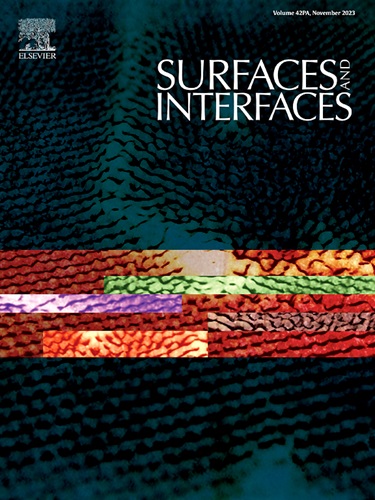Nanoarchitectonics of carbon-based electrodes via activated carbon/carbon composite xerogels by CO2
IF 5.7
2区 材料科学
Q2 CHEMISTRY, PHYSICAL
引用次数: 0
Abstract
Carbon/carbon (C/C) composites, characterized by trimodal porous structures and highly tunable surfaces, offer promising prospects for electrochemical applications within the framework of nanoarchitectonics. However, recent research lacks systematic investigations into property-controlled performance. This study explores the effects of functional groups, surface area, and pore architecture in CO2-activated C/C composite xerogels synthesized from resorcinol-formaldehyde (RF) sol and cotton fibers (CFs). Increased activation time and CF content enhanced porosity, functional group density (O![]() H and C
H and C![]() O), and structural disorder. The macropores introduced by CFs facilitated deeper CO2 penetration, thereby increasing meso‑ and microporosity, surface area, and specific capacitance. Electrochemical performance measured through cyclic voltammetry and charge/discharge analysis revealed that capacitance was governed primarily by surface area rather than pore geometry. Specific capacitance and surface area increased from 144 to 344 F g⁻¹ and from 575 to 1471 m² g⁻¹, respectively, under 0.5 A g⁻¹ discharge.
O), and structural disorder. The macropores introduced by CFs facilitated deeper CO2 penetration, thereby increasing meso‑ and microporosity, surface area, and specific capacitance. Electrochemical performance measured through cyclic voltammetry and charge/discharge analysis revealed that capacitance was governed primarily by surface area rather than pore geometry. Specific capacitance and surface area increased from 144 to 344 F g⁻¹ and from 575 to 1471 m² g⁻¹, respectively, under 0.5 A g⁻¹ discharge.
碳基电极的纳米结构通过活性炭/碳复合材料干凝胶的CO2
碳/碳(C/C)复合材料具有三模态多孔结构和高度可调表面的特点,在纳米结构框架内具有广阔的电化学应用前景。然而,最近的研究缺乏对财产控制绩效的系统调查。本研究探讨了间苯二酚-甲醛(RF)溶胶和棉纤维(cf)合成的co2活化C/C复合干凝胶中官能团、表面积和孔隙结构的影响。增加活化时间和CF含量,孔隙度、官能团密度(OH和CO)和结构无序度都有所提高。碳纤维引入的大孔促进了更深的CO2渗透,从而增加了中孔和微孔、表面积和比电容。通过循环伏安法和充放电分析测量的电化学性能表明,电容主要由表面积而不是孔隙几何形状决定。比容和比表面积分别从144到344 μ g - 1和从575到1471 μ g - 1。
本文章由计算机程序翻译,如有差异,请以英文原文为准。
求助全文
约1分钟内获得全文
求助全文
来源期刊

Surfaces and Interfaces
Chemistry-General Chemistry
CiteScore
8.50
自引率
6.50%
发文量
753
审稿时长
35 days
期刊介绍:
The aim of the journal is to provide a respectful outlet for ''sound science'' papers in all research areas on surfaces and interfaces. We define sound science papers as papers that describe new and well-executed research, but that do not necessarily provide brand new insights or are merely a description of research results.
Surfaces and Interfaces publishes research papers in all fields of surface science which may not always find the right home on first submission to our Elsevier sister journals (Applied Surface, Surface and Coatings Technology, Thin Solid Films)
 求助内容:
求助内容: 应助结果提醒方式:
应助结果提醒方式:


